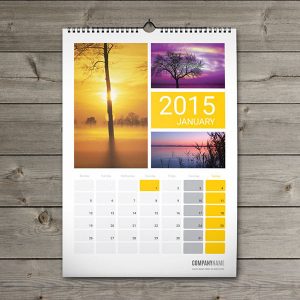Calendars hold immense cultural significance around the world, serving as tools to organize time, mark important events, and reflect cultural values. Different societies and civilizations have developed unique calendar systems based on their traditions, astronomical observations, religious beliefs, and historical context. Here’s a glimpse of the cultural significance of calendars in various parts of the world:
- Gregorian Calendar (Western): The most widely used calendar, the Gregorian calendar, is named after Pope Gregory XIII, who introduced it in 1582. It’s based on the solar year and has cultural ties to Christianity, as it was designed to determine the date of Easter while correcting inaccuracies in the Julian calendar. New Year’s celebrations on January 1 are prominent in many Western cultures.
- Islamic Calendar (Hijri): The Islamic calendar is a lunar calendar consisting of 12 months of 29 or 30 days each, depending on the moon’s sighting. It has significant cultural and religious importance for Muslims, marking key events such as Ramadan (month of fasting) and Eid al-Fitr (celebration after Ramadan).
- Chinese Calendar: The Chinese calendar is a lunisolar calendar with 12 or 13 months, each starting on the day of the new moon. It’s integral to Chinese culture and is used to determine festivals like Chinese New Year (Lunar New Year), which is a time of family reunions and symbolic traditions.
- Hindu Calendar: The Hindu calendar is a lunisolar calendar with various regional variations. It’s tied to religious and cultural practices, with festivals and auspicious days being crucial events. Diwali, Holi, and Navaratri are some of the significant Hindu festivals.
- Jewish Calendar: The Jewish calendar is also a lunisolar calendar, with months based on the lunar cycle and years adjusted to align with the solar year. It’s central to Jewish religious observances, such as Passover, Hanukkah, and Rosh Hashanah (Jewish New Year).
- Japanese Calendar: While Japan uses the Gregorian calendar for most purposes, it also has its own traditional calendar system called the “kōki.” This system counts years based on the reign of the emperor, and it’s still used for some ceremonial and historical purposes.
- Mayan Calendar: The Mayan calendar system, known for its complex interlocking cycles, was used by the ancient Maya civilization. It has gained global attention due to its association with prophecies, particularly the “Long Count” calendar, which had a major cycle ending in 2012.
- Ethiopian Calendar: Ethiopia uses its own calendar system, known as the Ethiopian calendar or Ge’ez calendar. It’s closely tied to the Ethiopian Orthodox Tewahedo Church and is around seven to eight years behind the Gregorian calendar.
- Indian National Calendar: India adopted the Saka calendar as its national calendar in 1957. It’s based on the Saka Era, which starts with the legendary victory of King Vikramaditya over the Sakas.
- Thai Calendar: Thailand follows the Thai solar calendar, which is based on the Thai solar year. It’s used for official purposes and cultural events.
These are just a few examples of how calendars are deeply integrated into the fabric of various cultures, shaping the way people observe festivals, commemorate historical events, and organize their lives. Calendars offer insights into the values, religious practices, and historical narratives of different societies, making them an essential part of cultural identity and heritage.


























